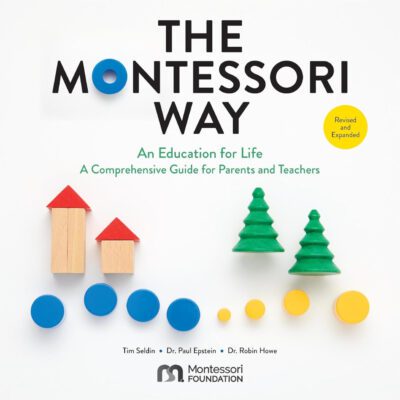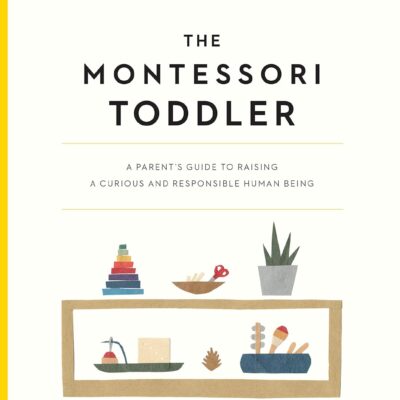
First Days at School: Morning Routines
DEAR CATHIE— WE WILL BE ATTENDING OUR LOCAL MONTESSORI SCHOOL BEGINNING NEXT FALL, AND WE HAVE BEEN READING ABOUT THE SCHOOL AND THE MONTESSORI METHOD. THIS WILL BE OUR CHILD’S FIRST TIME TO BE SOMEPLACE OTHER THAN HOME ON A DAILY SCHEDULE. WE KNOW THAT TIME SCHEDULING IS NOT EASY FOR CHILDREN. WHAT CAN WE DO TO HELP MAKE THE MORNING ROUTINE WORK EFFICIENTLY AND YET NOT FEEL RUSHED? WE HAVE HEARD FROM OTHER PARENTS THAT THIS CAN BE QUITE STRESSFUL! — AN ALREADY STRESSED PARENT
Dear Parent,
This is an exciting time in your family’s life as you get ready for your child to start school. There are many things you can do to make the morning as smooth as possible, and they all begin with a calm, smooth, and predictable daily routine.
Consider which tasks you might do in the evening versus what you might need to do in the morning. Think about which time frame might be less hectic for you and your family. Consider things, such as picking out clothes; packing lunches; packing your child’s backpack; finding tomorrow’s footwear; etc.
Now think through the details of the tasks. Where will you take care of the morning bathroom business? Will you bathe in the morning or evening? If you take baths in the evening, will you eat breakfast in pajamas and then change into school clothes or get totally dressed for school and then eat breakfast? When will you pack the backpack? Perhaps you have the backpack ready and by the door in the morning, as well as the child’s shoes so you don’t need to look for these items as you are getting ready; if ready the evening before, all that is necessary is to add the child’s filled water bottle and lunchbox to the backpack and, viola, you are done. Let your child be aware of what
will be coming and make it more or less the same every day. We encourage children to be involved in all the process as much as they are able. When choosing clothes, choosing between two outfits works well. If picking out clothes is challenging, then perhaps that can be done after dinner the night before, so this is an already completed task in the morning. Let him help with packing his backpack, choosing what he will eat for lunch, etc. Keep the possibility of his helping at the forefront of your mind as you go through the process. (If he needs clean socks for school, can he get them from the drawer and put them in his backpack?)

When you return home in the evening is another time to work with your child to begin preparing for the next day. Let your child assist with unpacking his backpack and taking care of items that need to be dealt with, such as washing his water bottle; cleaning his lunch box; putting laundry where it belongs; etc. Adding these tasks to your afternoon routine ensures you will be aware of what your child needs for school the following day or other school notifications. It also encourages your child to become a partner in these responsibilities and encourages him to chat about his day. It is just one more way of keeping the lines of communication open.
Of course, school information comes out electronically, as well, these days, but this is still a good way to stay organized and involve your child.
As with all aspects of child rearing, flexibility is paramount as routines will naturally ebb and flow. Your family’s situation may change, or you may decide what you are doing is just not working! Parental workplace demands may cause a shift in routine, and children may assume some of the responsibilities as they mature.
Your best family routine will evolve with time. Make a conscious plan and carefully think through the division of your morning, afterschool, and evening tasks. Keep your routine as consistent as is reasonable and involve your child in as many aspects of the process as is developmentally appropriate. Build in a bit or extra time so your morning does not feel rushed! Good Luck! •
Here is an example of a family’s daily, school-year routine.
MORNING
• breakfast
• brush teeth
• get dressed
• fill water bottle
• pack lunch
• put on shoes
AFTER SCHOOL
• unpack backpack
• wash water bottle
• clean lunchbox
• put laundry where it belongs
• replace any clothing/bedding needed for the next day
EVENING
• pack backpack
• pick out clothes for tomorrow together
• bath time
• brush teeth
• read stories
• child goes to bed
Cathie Perolman is a reading specialist, elementary educator, author, consultant, and creator of educational materials for Primary and Elementary students. Checkout her new downloadable materials on her websitecathieperolman.com.
For more than three decades, she has dedicated her energies to improving reading for all youngsters. She is the author of Practical Special Needs for the Montessori Method: A Handbook for 3-6 Teachers and Homeschoolers published by the Montessori Foundation(available through montessori.org.) She is a regular contributor to Tomorrow’s Child and Montessori Leadership magazines.
Cathie Perolman holds a BS in Early Childhood Education and a MEd in Elementary Education with a concentration in reading. She is credentialed as a Montessori teacher. She is married and has two adult children and two adorable granddaughters. Cathie lives in Ellicott City, Maryland with her husband.








